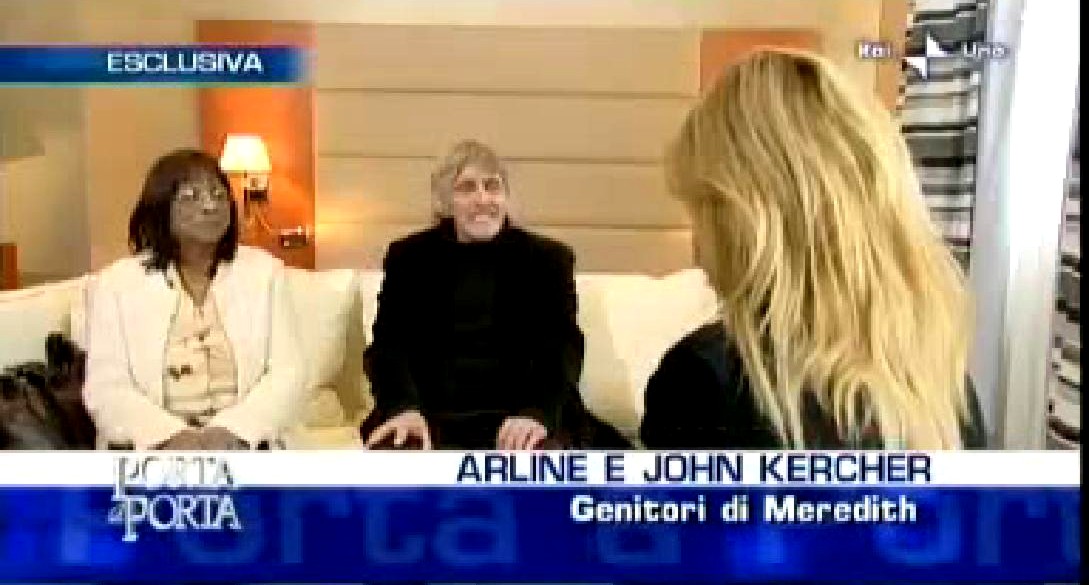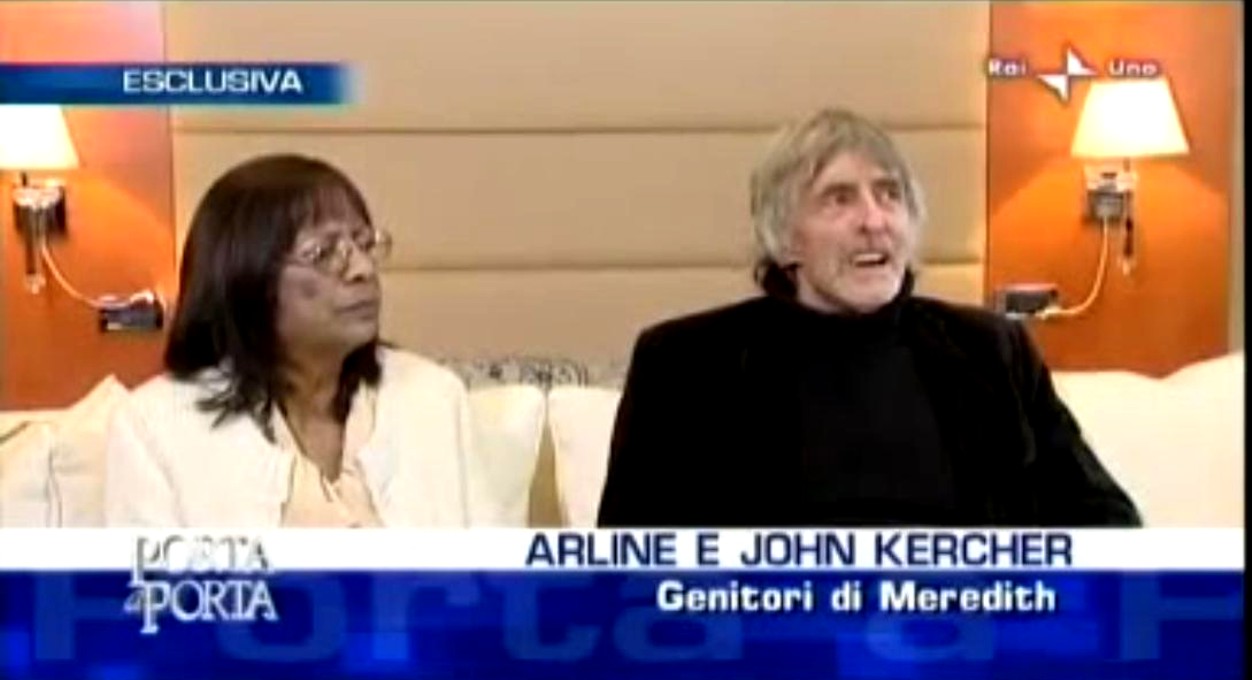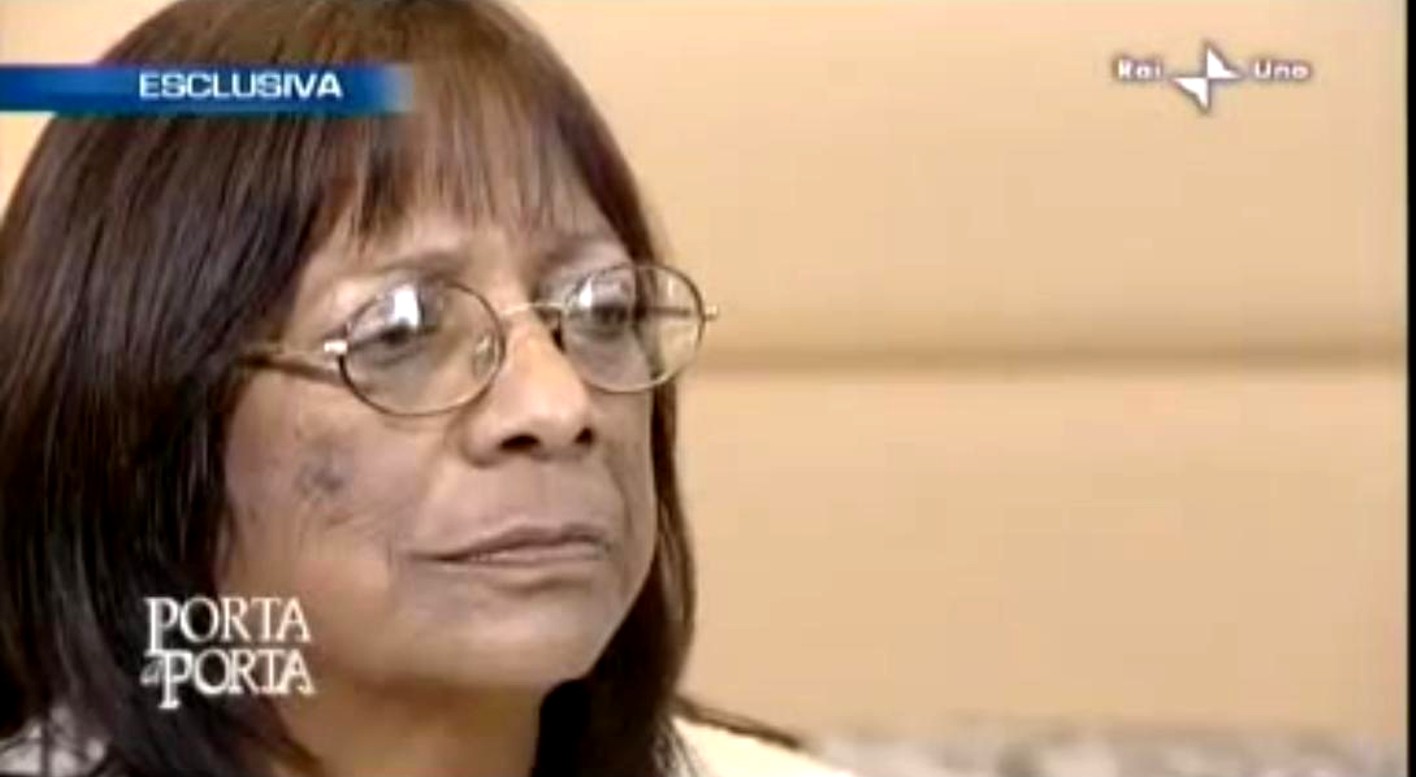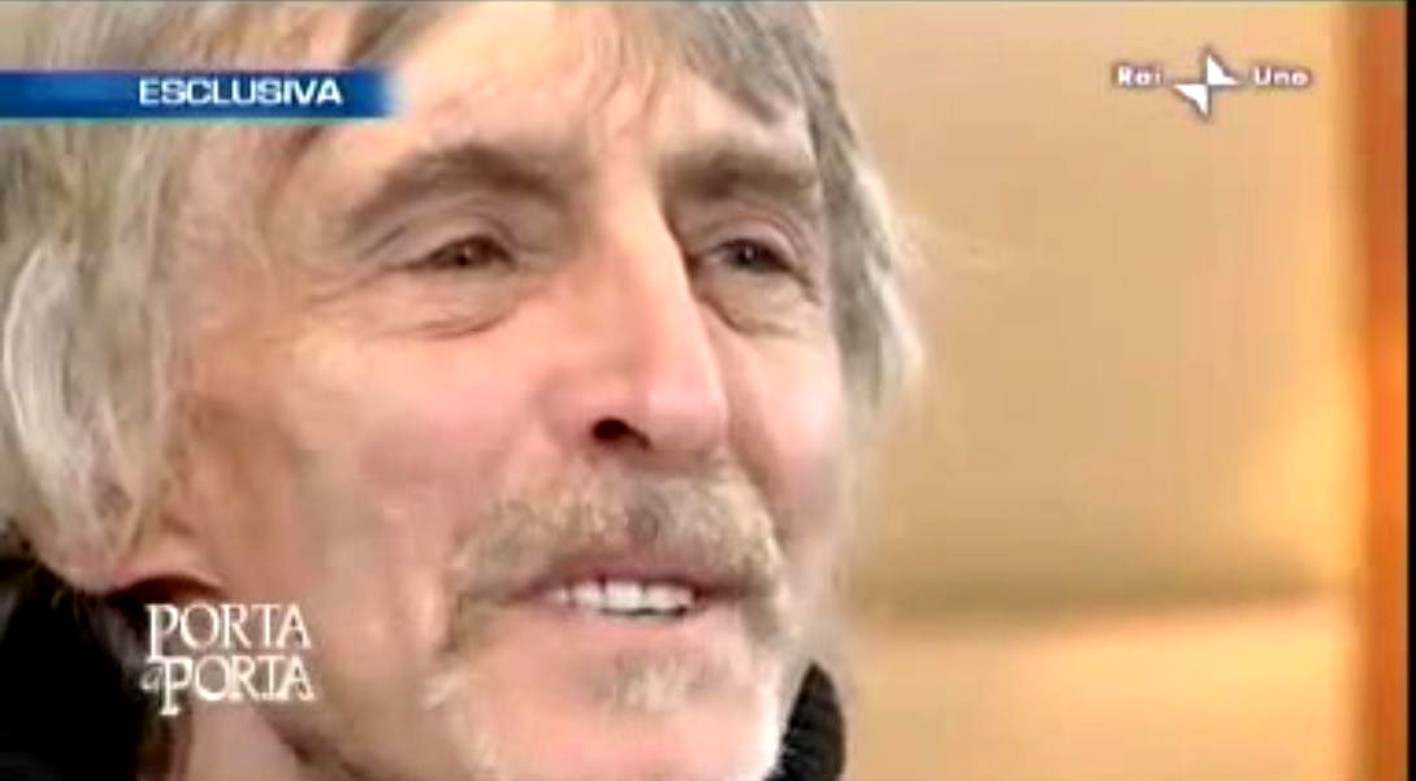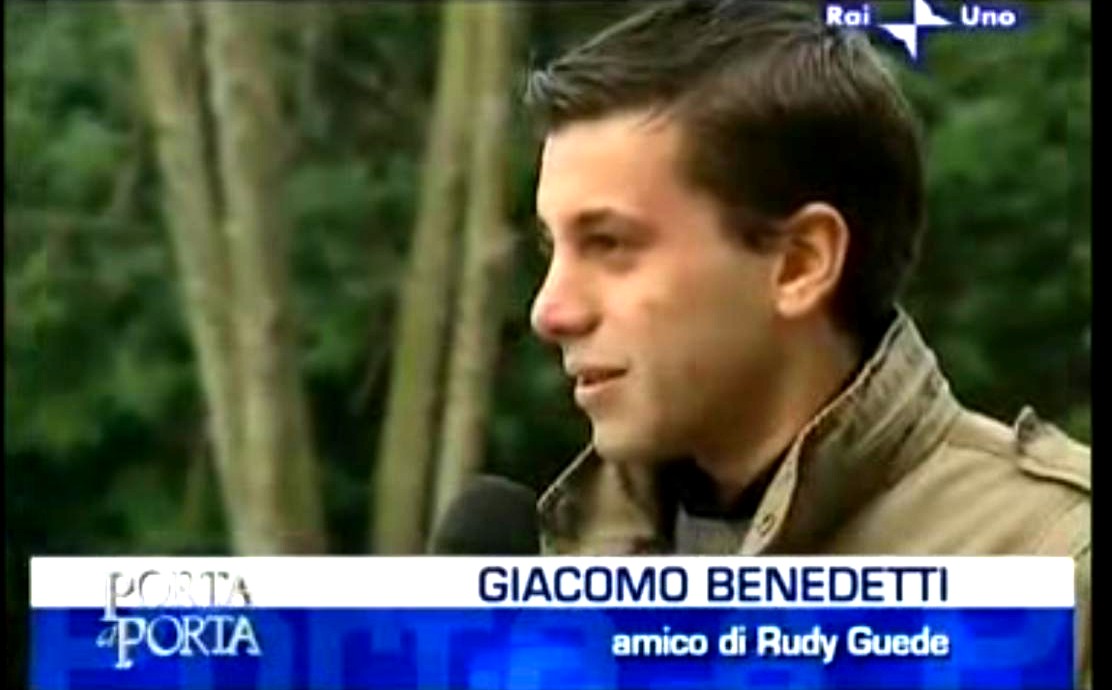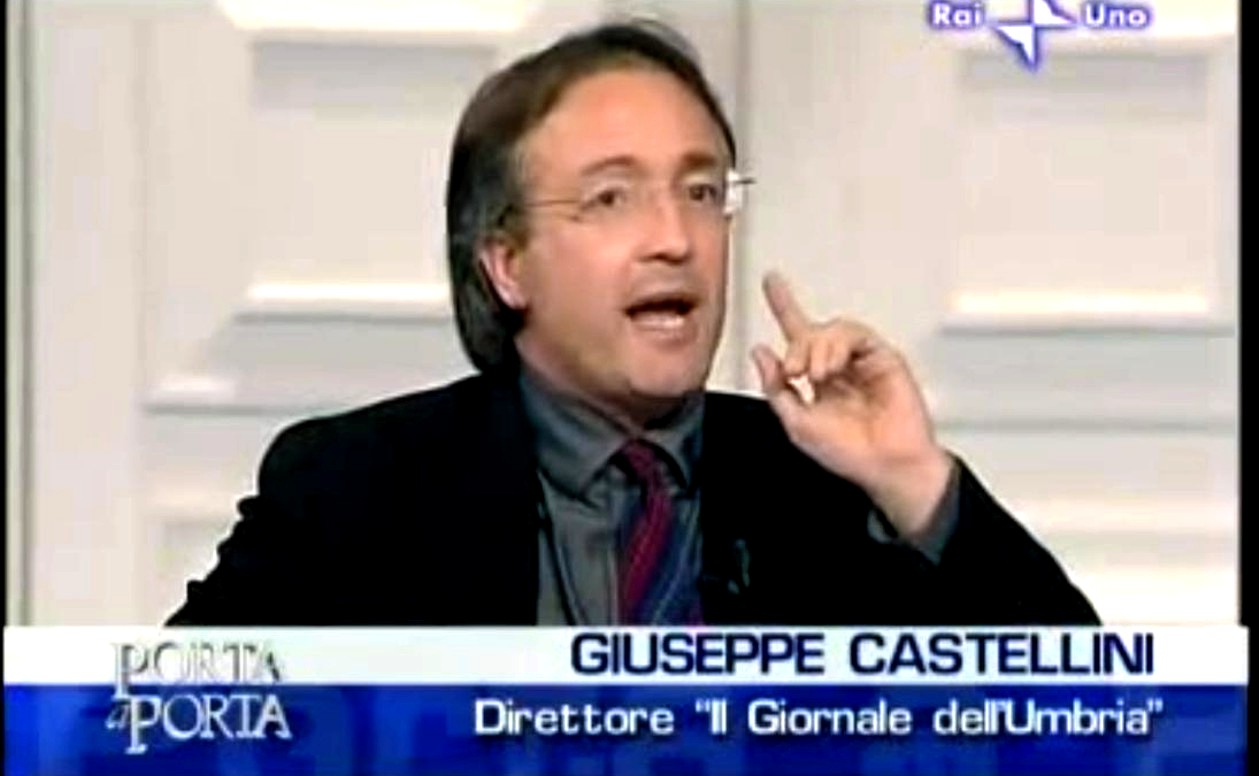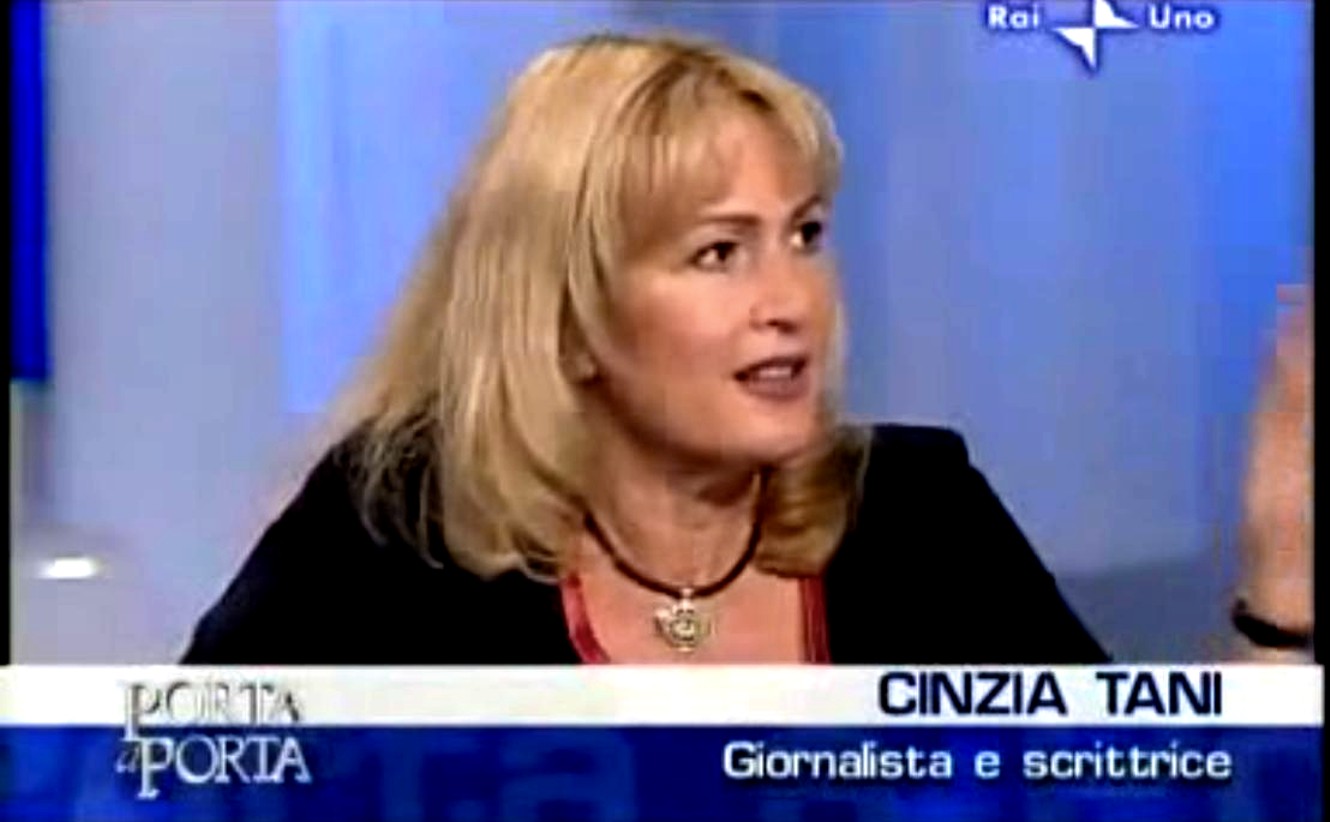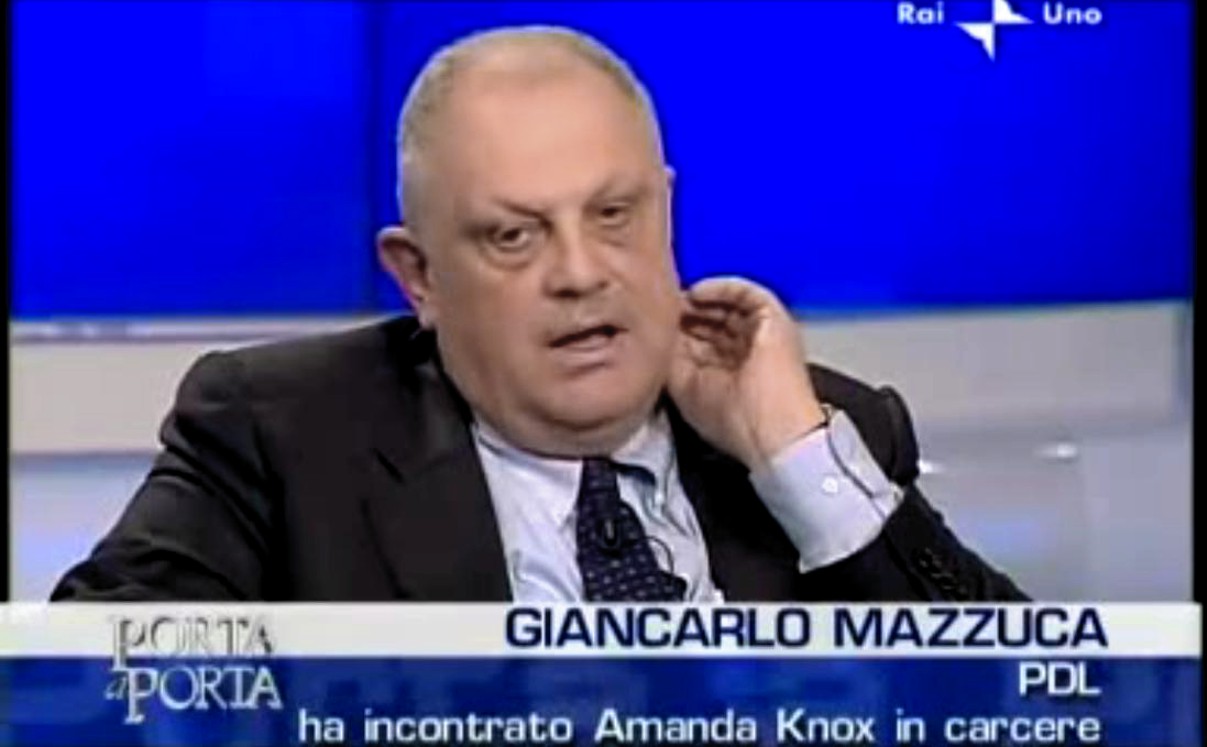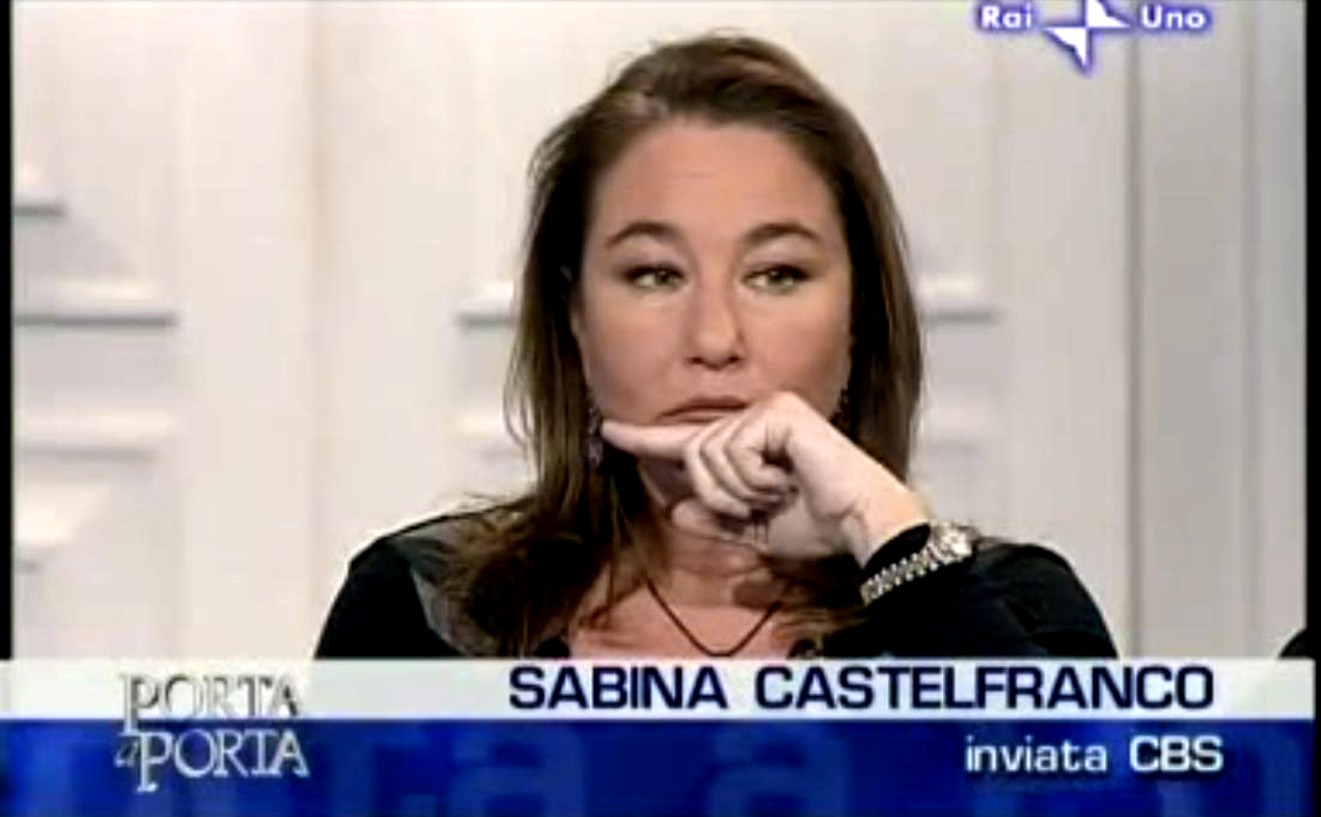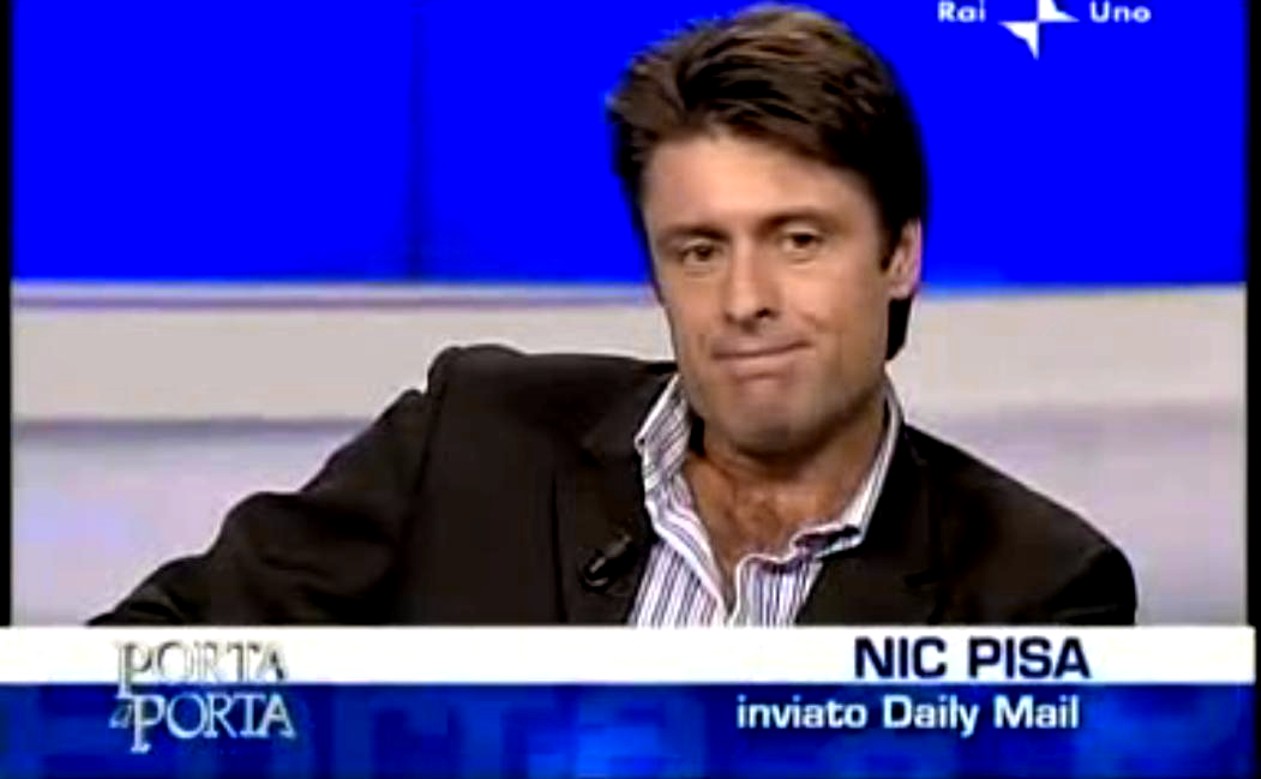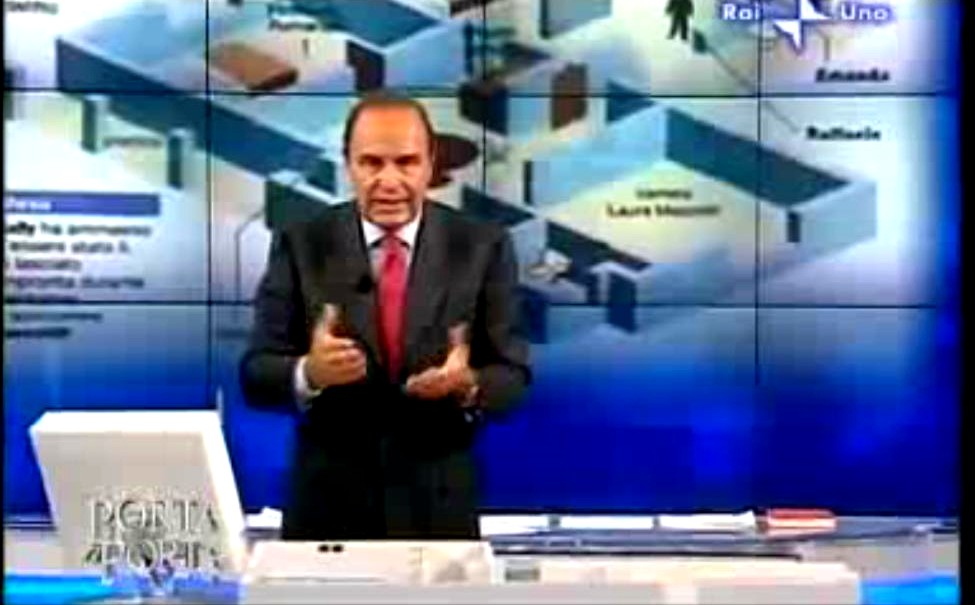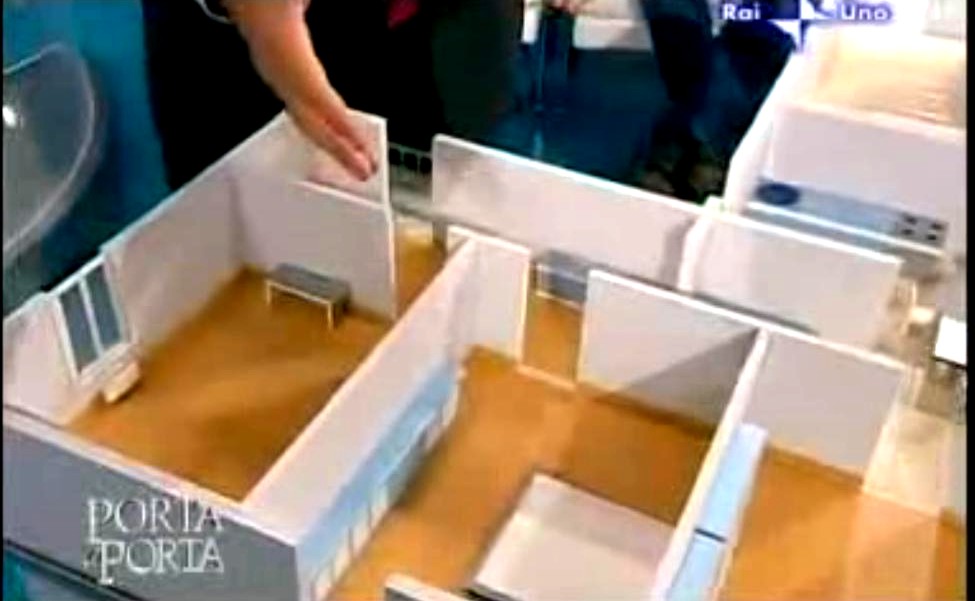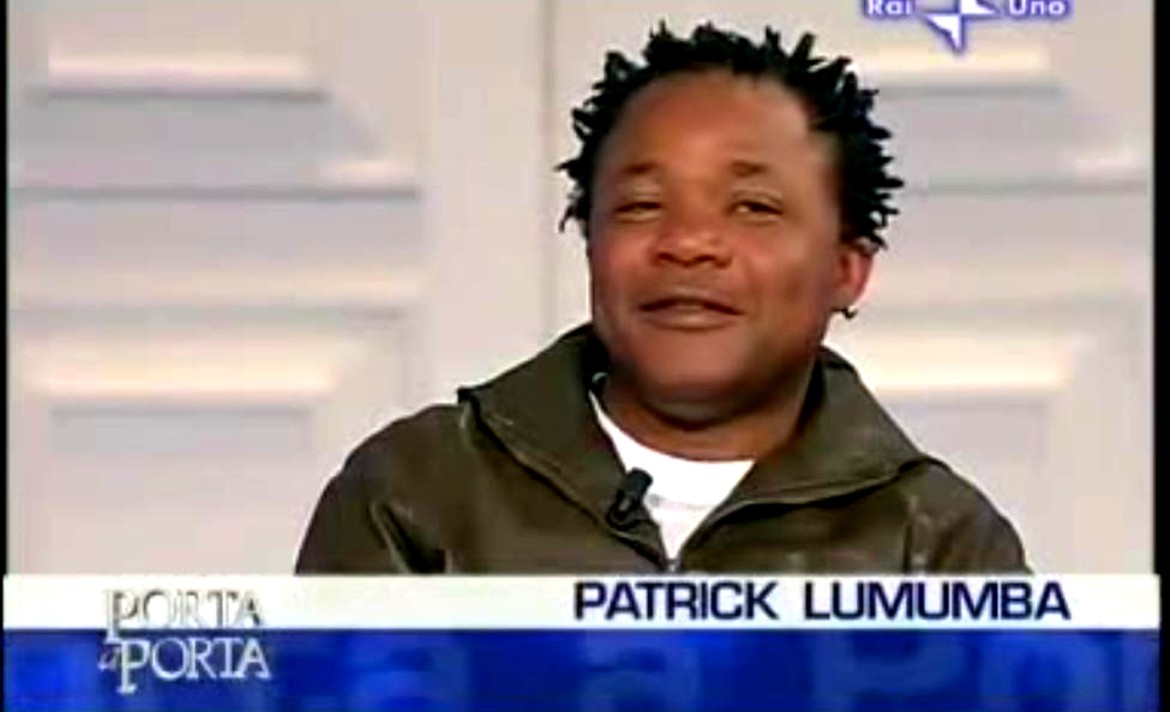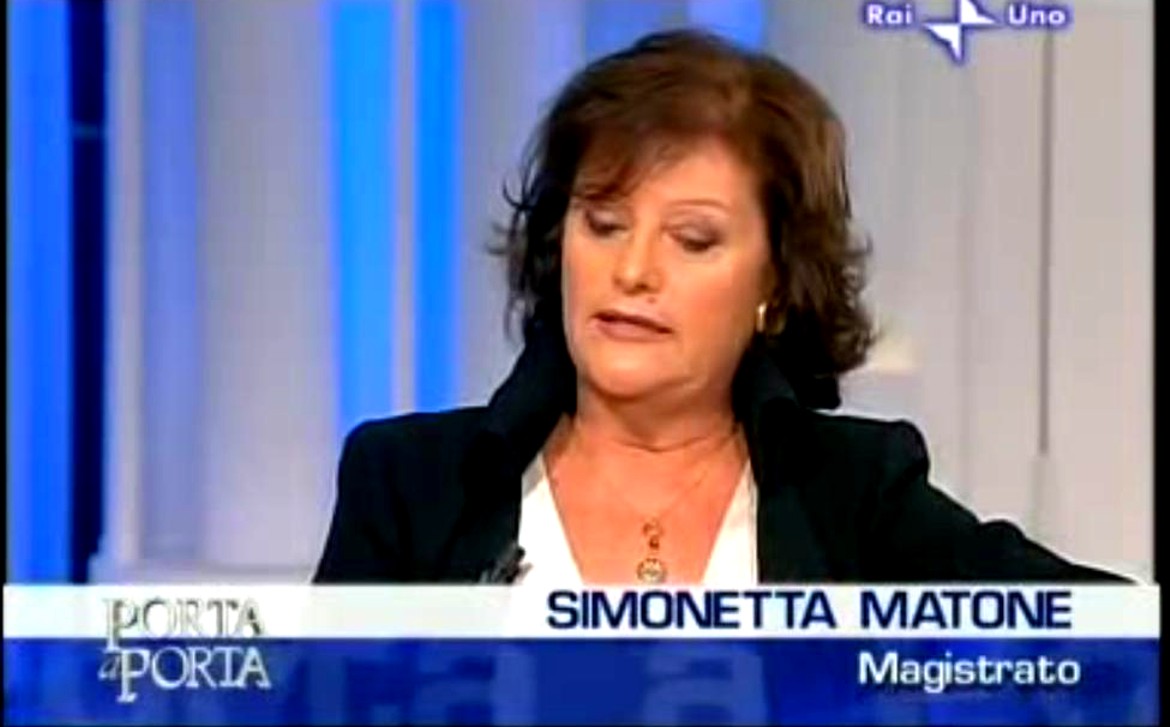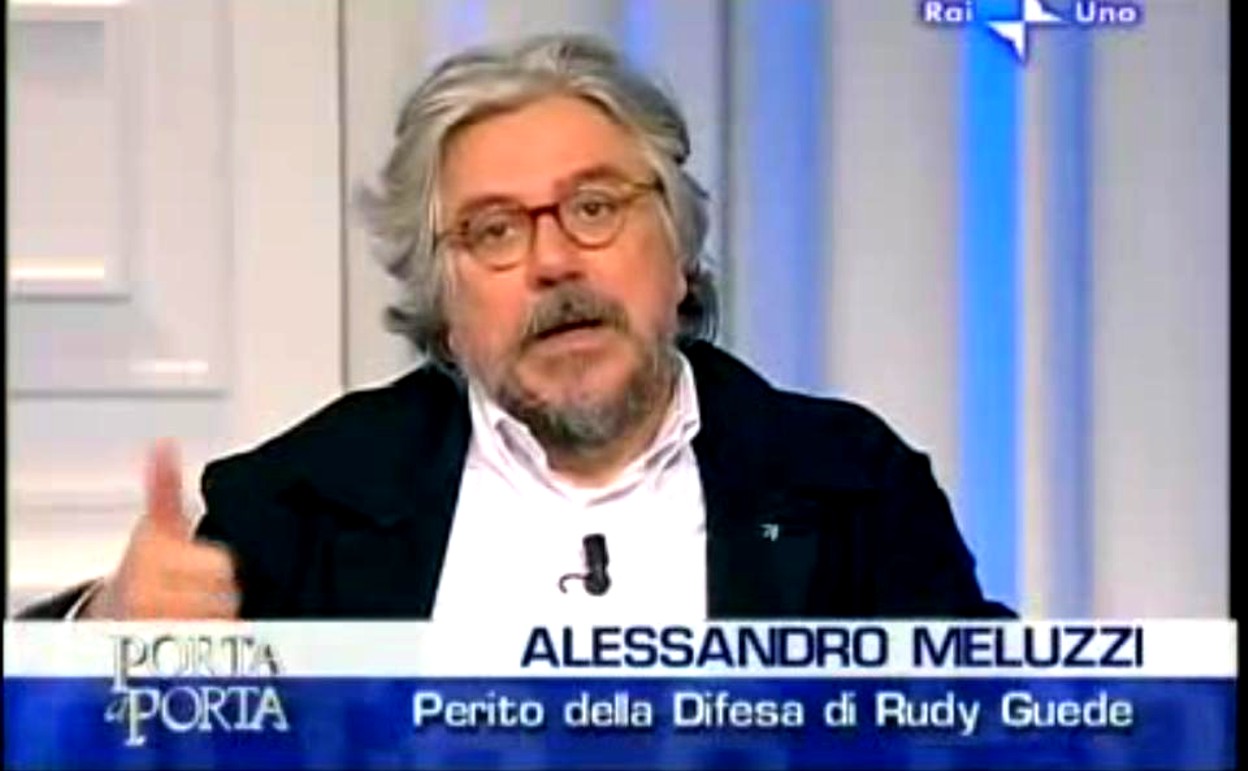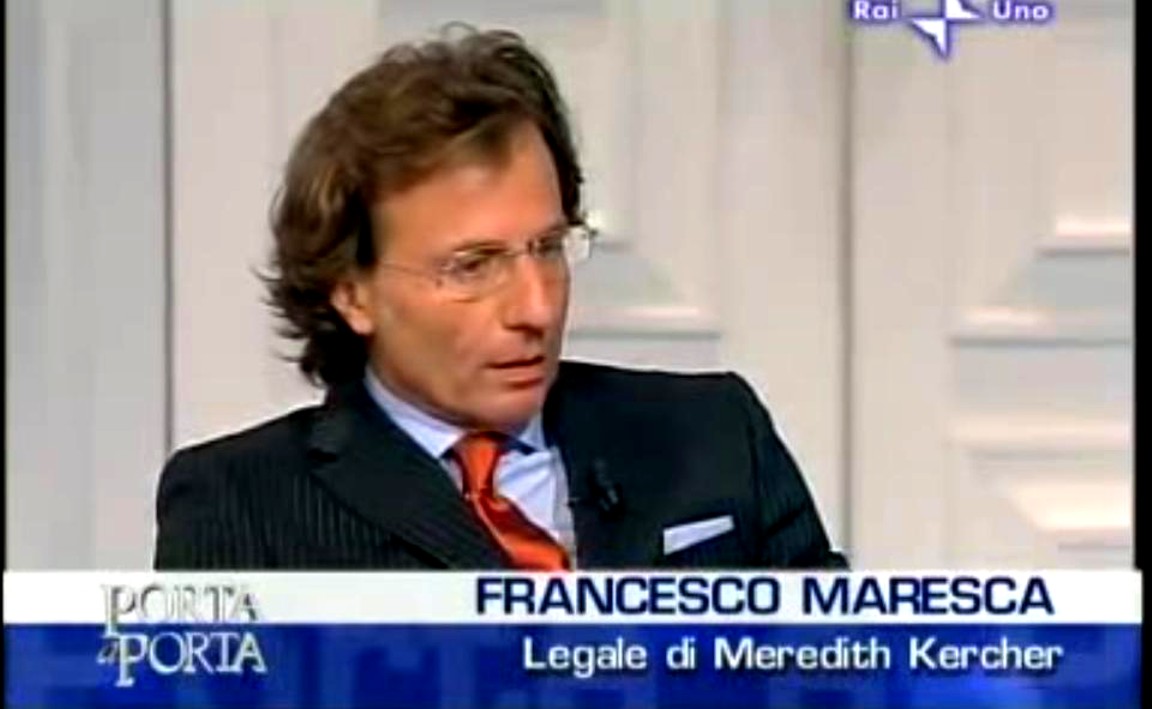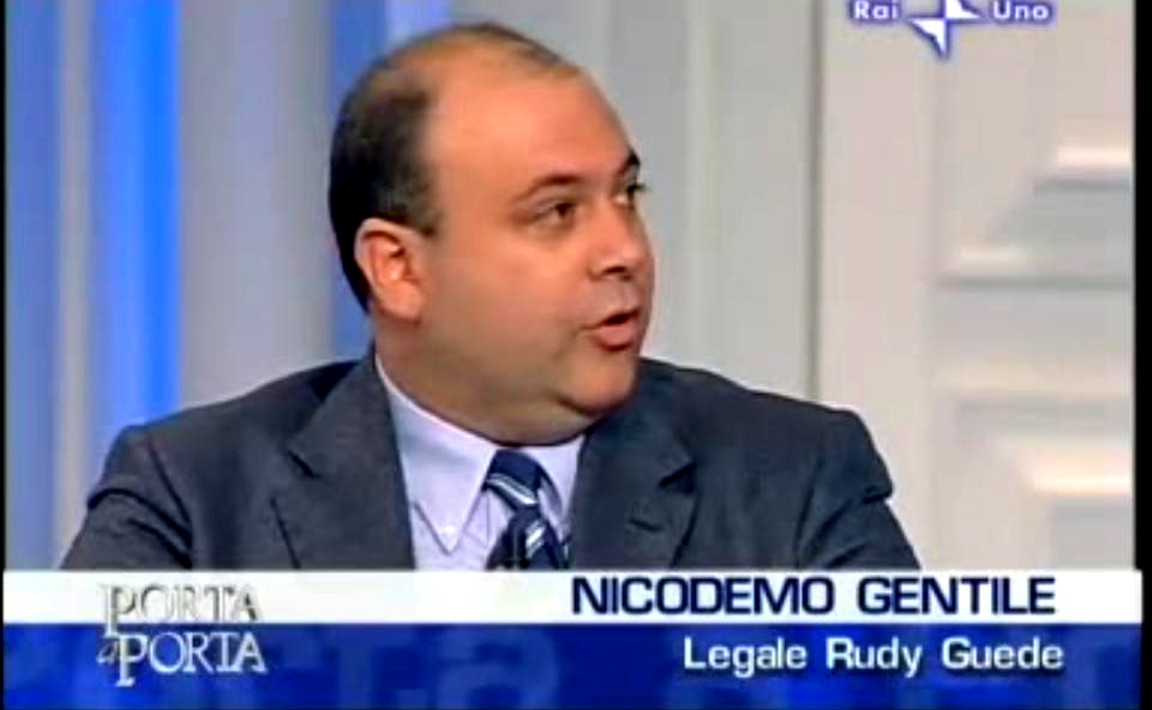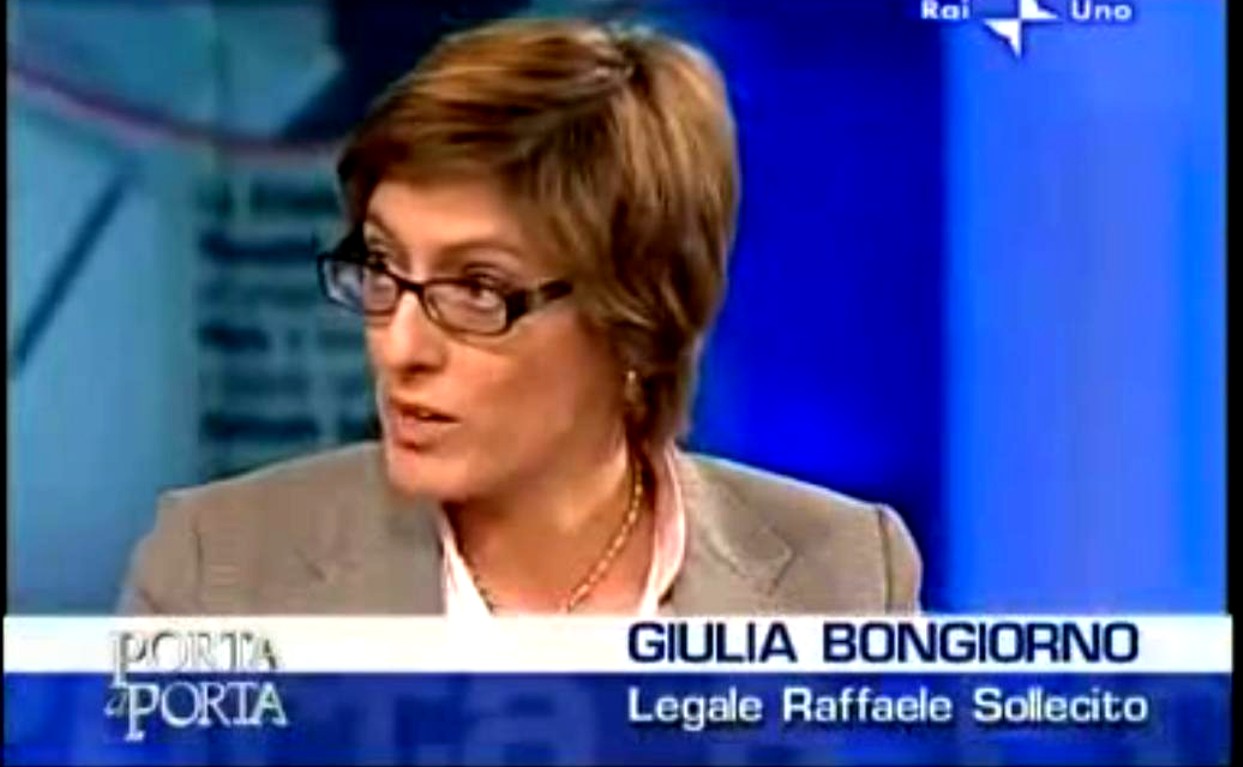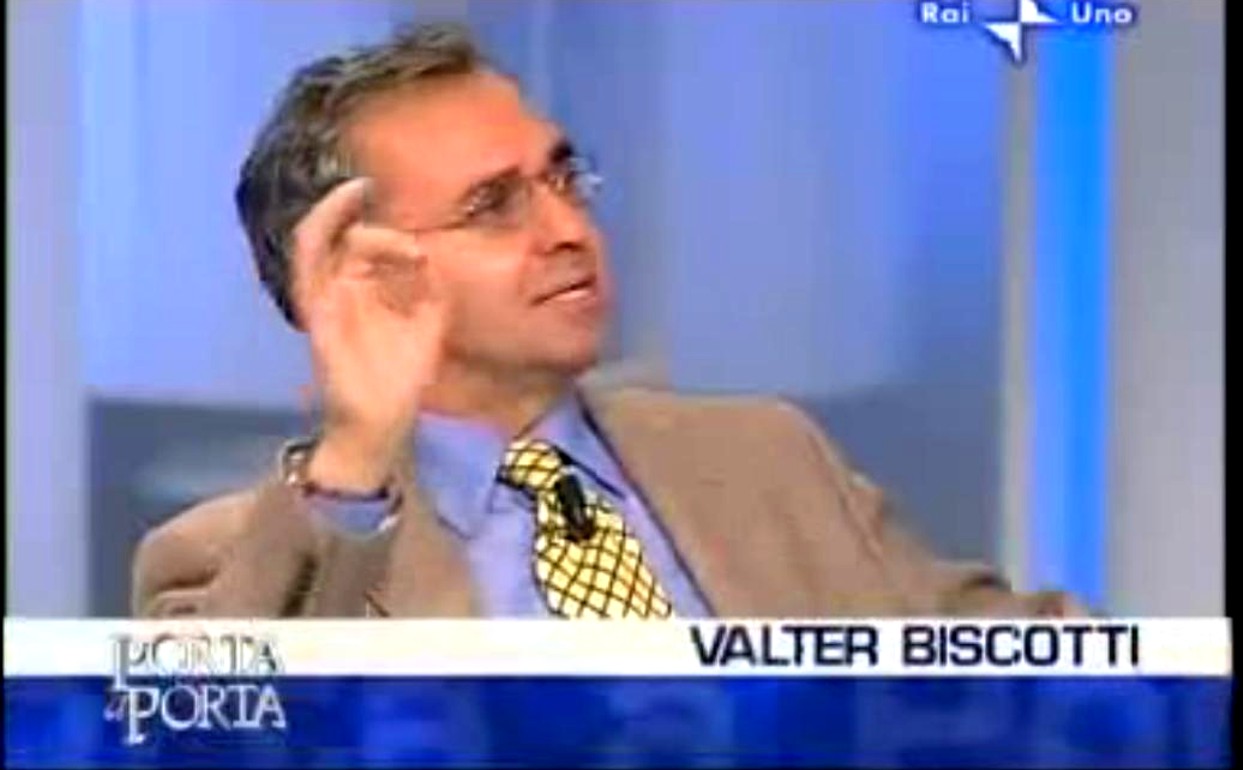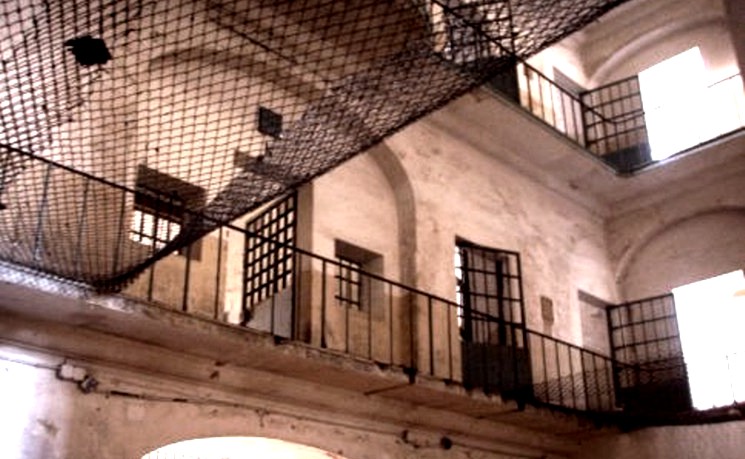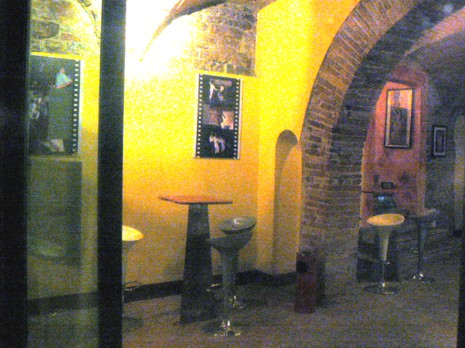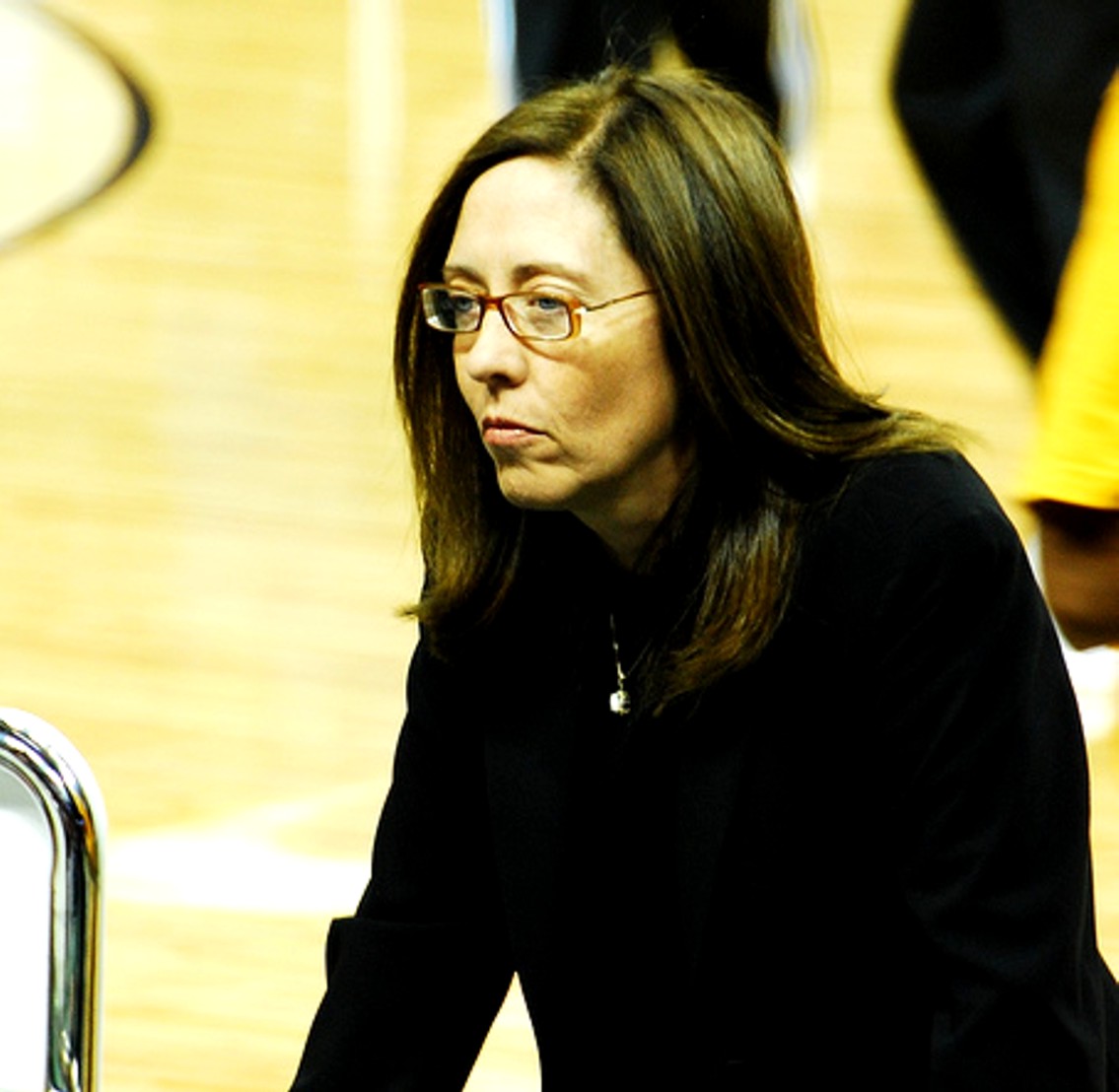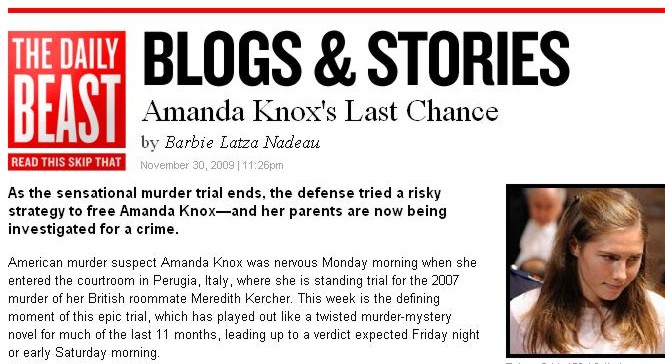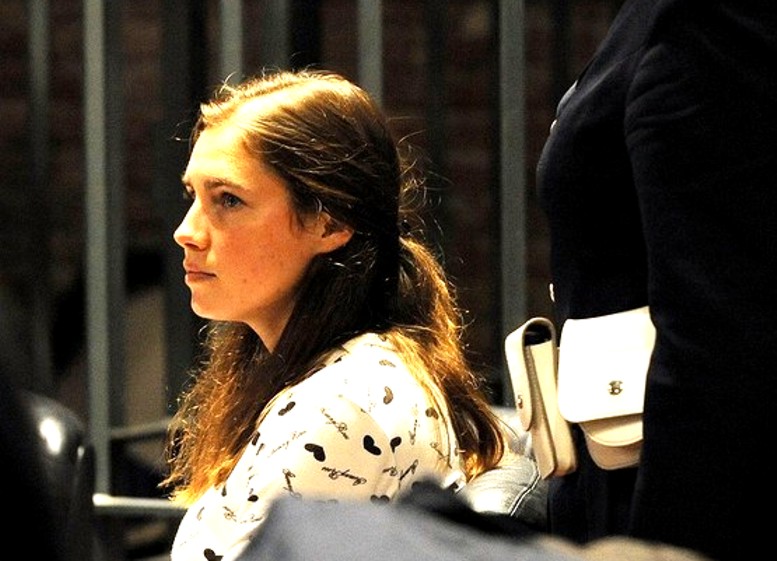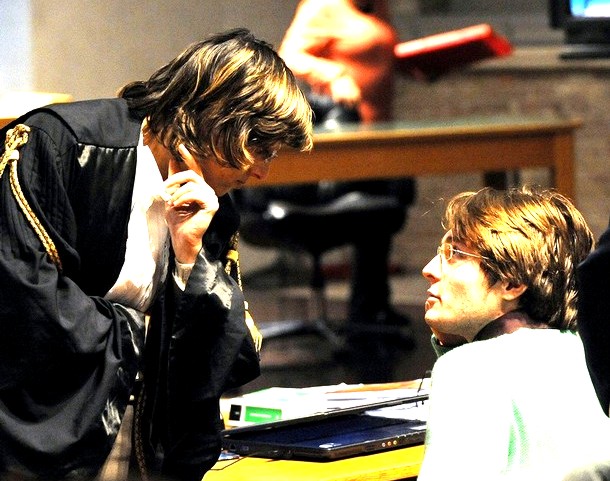
Category: The defenses
Friday, May 14, 2010
How Each of The Three Subtly But Surely Pushed The Other Two Closer to The Fire (Part 2 of 4)
Posted by Cesare Beccaria
My previous report on this appeared here. On 12 November 2007 Guede has a first chat conversation on MS Messenger, from Germany, with his friend Gabriele.
His friend asked him why he keeps running away, and Guede answers “I can’t”. “You can’t what?” asks his friend. Guede replied “you know [why]”. “What should I know” asks his friend, but with no further reply.
Up to that moment the media knew nothing about Rudy Guede’s involvement, but he certainly felt that police were already investigating him. He knew that thus far Amanda and Raffaele had not mentioned his name.
On 15 November the investigators identify the finger print on the pillow as belonging to Rudy Guede.
On 16 November Giacomo, another friend of Rudy, was informed that Guede could have had something to do with the murder, and on the 18th he is interrogated by the prosecutor.
On 18 November Raffaele writes in his diary: “As I am thinking and rebuilding [my thoughts] I think that Amanda always remained with me. The only thing I don’t remember exactly is if she left during the evening for few minutes”.
At this point police know that Raffaele and Amanda were together at his house when Jovana Popovic arrived at 8:40PM. But they were also found together at Raffaele’s house when Jovana rang the bell in the afternoon between 5:45-6:00PM.
Why then would Raffaele say at first that he went home alone at 9:00PM, and then that “maybe it was 8:30” and Amanda was with him, and now he thinks that Amanda was with him the entire time, but he doesn’t remember if she left and, in the event that she did, at what time she returned?
Was he desperately attempting to dissociate himself from Amanda? Was he then being told to retract, but just not too much?
“I am certain that she cannot have killed Meredith and then returned home” says Raffaele. “I hope that truth emerges. None of us three [meaning also Patrick Lumumba] have anything to do with this”.
Here again we find this supposition regarding Amanda. A week before he said “It would be fabulous if Amanda hasn’t done anything” and the previous day he said: “I don’t think she’s capable of killing someone”.
What is the need of all these quasi affirmations? And why does Amanda make the exact same quasi affirmations in her own diaries?
On 19 November Guede has another chat conversation on MS Messenger, this time with Giacomo. He explains to Giacomo what had happened that evening, and that neither Amanda nor Patrick are involved.
Why does he explicitly deny Amanda’s involvement in the murder? Could he be covering up for her, since she also hasn’t ever mentioned his name up to this date?
On the same chat session, Rudy describes the aggressor as an Italian of young age. When Giacomo asks if that person was Raffaele, his reply was “I don’t know, but I think so”. He repeated “I think so” several times as Giacomo kept asking him if he was sure that person was Raffaele.
Soon after, Giacomo and Rudy started a conversation via Skype, the online video phone system. This conversation was recorded, and made public.
A couple of parts are very important. First of all, Rudy puts a lot of emphasis on the money stolen, and on Meredith being upset with Amanda. Why would he be so insisting on this matter?
Rudy adds that “Amanda never mentioned the money issue, nor did Raffaele” implying that he somehow knows this information first-hand, since it had not ever been reported in the media up to that day.
Rudy then tells Giacomo that he went to the bathroom, and heard the doorbell ring and Meredith opening the front door. Rudy adds that “It could have been anyone “¦ it could have been Amanda”.
So again he explicitly mentions Amanda. Why would he say “It could have been Amanda”?
On that same conversation Guede reads a paragraph to Giacomo from a media article mentioning the laundry, the break-in and the undressing of the victim, Meredith.
Guede says “If all this really happened, it must have been done by Amanda or Raffaele… they have done it”. Giacomo asks “Why would they have done this”? And Guede replies “Because when I left she [Meredith] was dressed”.
Giacomo says “So they killed her while she was dressed”. And Guede says: “Yes, here it says that they [clothes] were washed in the washing machine, but that’s not true. She was dressed”. And then he explains to Giacomo how she was dressed and adds: “That means that they have washed them [Meredith’s clothes]”.
Then Giacomo asks “But why did they wash her clothes if she [Amanda] has nothing to do with this”, and Guede replies “What the hell do I know”. And finally Guede adds: ” “¦ then after, from what I read, someone came back, because when I left the window was not broken. That means that someone broke it, and it wasn’t me”.
Again, here we have Rudy Guede mentioning Amanda and Raffaele. Why would he mention their names, and assume that they staged the break-in, undressed the victim, and did some laundry?
On 20 November Raffaele writes “Today they finally caught the real killer of this incredible story. They found him in Germany. But at the moment I am not 100% tranquil because I fear that he might make up strange things”.
Why would Raffaele fear that the killer might fabricate some strange things?
On 20 November Rudy is arrested in Germany. He is interrogated for the first time, in Koblenz, where he repeats the same version he had given to Giacomo on the phone, except that he does not mention Amanda or Raffaele.
During his detention he writes a memorandum in which he describes the events of the night of the murder.
This document is of extreme importance, since this time he does mention Amanda again, this time with serious threats.
First, he includes “kind words” for Meredith
To see these written in a memorandum while denying his own role in her death and failure to save her seem simply repulsive. They seem about the lowest thing that a man with a minimum of decency could ever write.
He was undeniably there when she was killed, and according to the judges he participated to the murder. His story of using an I-Pod when going to the bathroom and not hearing things and then hearing things seem simple stupidity.
Second, Guede indicates that Amanda’s story of being at the house with Patrick is not true.
He knows that Patrick has been recently released. Why then does he ask “How could Amanda have slept in that place full of blood”? Also, why is he blaming Amanda for not calling the ambulance?
Also, Rudy knew that Amanda stated that she heard Meredith screaming. Why would he tell Giacomo on Skype that he heard “a scream so loud that it could have been heard from the street”?
Third, in his writings, Rudy asks Amanda for the reason for her account of Meredith being raped. “Meredith and I just talked that night” Rudy writes. Then he adds “Say the truth, what are you hiding”.
We see here another important statement that Guede is making. Why would he be upset that Amanda said that Meredith was raped? Also, why would he want to clarify the fact that with Meredith they “just talked”?
Guede sounds as if he’s extremely upset about Amanda’s story of rape, and about the accusation of a black man. To him all this must appear as if Amanda was giving clues to the prosecutor to look further into Guede as the possibly killer.
We should note that Amanda did make a partial retraction when she states that her story could have been an imagination of her mind. But she never fully retracted her story, or her accusation against a black man.
Guede knows that Amanda’s story is not just partially but totally untrue. For this reason he writes a harsh criticism of Amanda and asks her, in a threatening way, to talk and speak the truth.
Guede is also angry about what he read regarding the staged break-in, the undressing of the victim, and the laundry, and quite probably about the evidence left intact in the toilet.
To him, the sum of these events and statements by Amanda probably looked like a direct attempt now to accuse him of the murder. “You already knew who to blame” he asks.
And then in turn he blames Amanda for the killing. “Did you hate your friend so much to the point of killing her or wishing her death?”.
All this was written as early-on as 20 November 2007.
Raffaele is also mentioned by Guede in his prison diary. He writes: “that AF, AF, could have been his name?”. Rudy adds: “what the hell happened that night. Talk and say the truth. What are you hiding. If it wasn’t Raffaele with you that night, who was it?”.
So we can clearly see that the reciprocal accusations began long before March 2008. Much less than one month after the murder of Meredith, they were already threatening one another and accusing each other.
And there’s more.
On 23 November 2007 three days after Guede is arrested in Germany, Raffaele requests an appointment with the prosecutor because he wants to clarify his position.
Mignini sets the appointment for 6 December 2007.
On 3 December 2007 Walter Biscotti, Guede’s attorney, announces on the Porta a Porta show (the most popular television program in Italy) that his client has important revelations to make, and that he “saw the killer and might be able to identify him “¦ Rudy didn’t tell me his name “¦ on his return I will show him the pictures and I imagine that he will be able to recognize him”.
But hadn’t Rudy already seen Raffaele’s pictures on the media while in Germany? Didn’t Giacomo ask him if it was Raffaele, to which he responded “I don’t know but I think so”?
On 5 December 2007 Guede meets his father in Mannheim.
According to “Il Messaggero” and “Il Mattino”, Rudy is quoted as saying: “I want to return to Italy as soon as possible and tell everything I know. I want to indicate the murderer of Meredith. I saw him and I could recognize him. Someone else was with him”.
When journalists ask Rudy’s attorney if he has seen the photos of Raffaele, he responds that all this is a matter for the prosecutor.
On 6 December 2007 Raffaele is questioned by Mr. Mignini - but he exercises his right to remain silent! Although it was he that asked to be interrogated in order to “clarify his position”.
On 7 December 2007 Guede arrives in Italy and is interrogated by the prosecutor.
Everyone is expecting Rudy to announce the name of Raffaele, but he doesn’t. He never even mentions Amanda. Rudy’s attorney tells the journalists that his client “did not give out the name of the killer because there is no name to give”.
So why did Guede announced from Germany some “important revelations” and that he saw the killer and could identify him - and then he doesn’t?
Why did Raffaele ask to be interrogated and then, after Rudy’s threat, and the day before Guede’s arrival, he exercises the right to remain silent once he sits down, face to face, at his own request, with the prosecutor?
Walter Biscotti tells the prosecutor that any “possible procedural action of recognition will be subject to subsequent interrogation” (“eventuali attivita’ processuali di riconoscimento saranno oggetto di successivo interrogatorio”).
Does this mean that Rudy is reserving the right to indicate the killer sometime in the future?
During the trial, Mr. Biscotti specifically noted that the name of Amanda Knox was not brought up by Guede only late in the day, since during the interrogation of 7 December 2007 by the GIP (the judge for the preliminary hearings) the attorney had stated that his client would be “available to provide further clarifications” right then.
Only the working schedule of the prosecutor made the interrogation slide to March 2008.
On 7 December 2007 Rudy Guede was interrogated by the GIP for seven hours, and he claimed his innocence. He explains his byzantine version of the events on the night, and he never mentions Amanda or Raffaele.
Guede says “I don’t know who the killer is and I cannot give a precise description because I was concentrating on looking at the knife”. Guede says that he heard two people talking outside the house, but he couldn’t even tell if those voices were of a male or a female.
In response to many other questions, his recurrent phrase was “I don’t remember”. He also explained his knowledge of Meredith’s missing money, which Rudy knew way before it became of public knowledge as he revealed in the conversation with Giacomo from Germany.
Amanda had previously said she had been at the house on the night of the murder, and she had never mentioned the name of Rudy, accusing instead another black man.
On 14 December 2007 Guede is heard by the Tribunale del Riesame.
He repeats that he didn’t see the aggressor because it was dark but that he could create an identikit. He confirms that two people were present, but doesn’t name Amanda or Raffaele.
The judge warns him that he must reveal the truth by telling the names of the people involved, but he refuses, saying that he never met Raffaele, and that he didn’t know Amanda had a boyfriend.
The Tribunale rejected his plea of house arrests because he was not coming clean.
A few days after his return to Italy, Guede receives a visit in prison from his friend Giacomo. During the conversation, Guede tells him that his memory was improving and that he saw Amanda at the house.
We can again see therefore that Amanda is mentioned, way before March 2008.
Guede also adds that Amanda accused Lumumba because, most likely, the assailant told her that a black man was in the house. Guede tells Giacomo that he had never met Sollecito before.
This discussion in prison took place on 7 December 2007 though it was brought out at trial only much later, through Giacomo’s testimony.
On 25 January 2008 Sollecito’s attorneys allow him or make him to say “I don’t know Rudy Guede but I am ready for a face to face confrontation with him”.
Obviously it was just a bluff.
Raffaele never talked, was never cross-examined, and was always kept off the stand. All we know about his statements was either through his lawyers or his father.
My next report appears here.
Wednesday, May 12, 2010
How Each of The Three Subtly But Surely Pushed The Other Two Closer to The Fire (Part 1 of 4)
Posted by Cesare Beccaria
Most people in Italy believe the two trials ended correctly because they have been exhaustively reported-to throughout.
Also they have been able to follow the machinations and the twists and turns of the three defendants and defenses in real time. And the court documents and transcripts are all issued in Italian, and some are officially posted on the Internet.
The media coverage in Italian in Italy exceeds the media coverage in English in the UK and USA by a factor of five or ten. And there have been a number of very highly rated and balanced TV talk-shows on the case, in the course of which the defenses were not able to muzzle or slant the discussions - even if they ever considered doing such a thing.
These TV talk-shows on the case have included the most prestigious of all such shows in Italy, Porta a Porta, which offered hours of discussion by all the legal players except for Amanda Knox’s team in December 2007, October 2008, February 2009, and December 2009.
The Porta a Porta discussions are at various points referred to here, and the images used here are from those shows.
This is a four-part analysis, based mostly on Italian-language sources, of the many twists and turns of each of the defendants (as they then were) and their defense teams when intent on giving themselves an edge while often slyly selling out the others.
This interplay has been evident almost as much between Knox and Sollecito and their teams as it has between either of them and Rudy Guede, though rather less hostile.
It is worth pointing out two things up-front. First, that this is still far from played-out, more twists and turns can be expected, and we still might see the complete flying-apart and separation of all three. And second, that public maneuvering like this by three people accused of a crime is REALLY unusual and there have been few real precedents. This behavior sure is not typical of innocent parties.
So to begin…
“Guede has kept quiet for as long as he could” said the Court of Appeal in its recent motivation report “because, given the deep connection of the events, accusing Amanda and Raffaele would have exposed him to their very probable retaliation”. (“Guede, finché ha potuto, ha taciuto, poiché, stante la profonda connessione degli eventi, accusare Amanda e Raffaele lo avrebbe esposto a più che probabili dichiarazioni ritorsive da parte di costoro”).
This phrase in boldface is extremely important in understanding the connection of the three actors to this horrible story.
Their attorneys have done an excellent job so far (the best they could) and will continue on appeal to try to convince the judges of their innocence, or at least for a substantial reduction of their sentence. Rudy Guede’s attorneys have already obtained what they needed. He will probably be out on parole in less than five years now.
The other defense have played a very delicate game in this trial. From the beginning, they could have asked for a finding of “preterintenzione” (a sort of non-intentional second-degree murder). But this would have forced their clients to admit the truth without the certainty of the judicial outcome. Hence they opted for the not-guilty plea.
Their first strategic action was in each case (RS and AK) to stop the damages that their clients were inflicting upon themselves with their statements.
The next strategic action was that of not appearing at the lab for the non-repetitive testing for the DNA, with the obvious intention (almost habitual in Italy) of refuting ex-post each and every forensic finding that could have been adverse to their client.
The third strategic action flowed from the major problem all the attorneys were facing in defending their own client: the risk of reciprocal retaliation. Like concentric circles, they all came to share a gray area that was tacitly considered off-limit for everyone else, like a haunted house that no one else dared to enter.
At first, this tacit accord was respected. But when various defense necessities emerged, the breaching of the accord began. The process was gradual but inexorable, leading to two brief but clear breaches: Guede’s explicit accusations against the other two in March 2008, and reiterated right after the disgraceful intrusion on the scene of Mario Alessi earlier this year.
This tactic was observed by the Appellate Court that heard Guede’s appeal. In their recent motivation report.
The judges reprehended all three offenders by stating that all three should have explained what had happened in that house on the night of the murder, “at least for a sense of human compassion toward the poor victim” and that instead they had “preferred to cram their statements (made on several occasions) with lies, reticence, half-truth, allusions, improbable occurrences and by more or less veiled reciprocal accusations”. (“Gli imputati hanno invece preferito infarcire le loro dichiarazioni, rese in diverse occasioni, di bugie, reticenze, retromarce, mezze verità , allusioni, prospettazioni inverosimili, accuse reciproche, più o meno velate”).
Rudy Guede was questioned in Koblenz, Germany, right after his arrest. He was also interrogated on December 7, 2007 and on March 26, 2008, and made spontaneous declarations on May 15, 2008.
At first he did not formally accuse anyone, and he remained very vague about his accomplices. He chose to go on trial first and so he had a slight advantage over the others.
Rudy Guede is undoubtedly a compulsive liar. He told his version of the events to perfectly fit his case, and adjusted his inconsistencies according to the changing development of events.
He first says Meredith was killed around 21:20 and then his attorneys made him change the time to 23:30. According to his absolutely improbable account, he met with Meredith at 21:00 and within TEN MINUTES they managed to talk about her mother’s health, go around the house looking for the missing money, had oral sex, and then suddenly had an urgent need to go to the bathroom. Then he puts his I-Pod on at high volume while doing his business in the bathroom of a girl he barely knew.
In this implausible story, Guede doesn’t explicitly name his accomplices. Amanda and Raffaele also told their fair share of lies, but at the beginning they didn’t directly accuse Guede either.
Things changed when the various attorneys started to slowly penetrate inside the off-limit zone.
Guede’s memory began to function as the lone-wolf theory was materializing. Apparently the volume of his I-Pod was not loud enough now to impede him from recognizing Amanda’s voice. His vision became clearer and he began to recognize her silhouette from the window and the identity of the aggressor.
The more Knox and Sollecito’s attorneys were elaborating their theory to reinforce their defensive strategy, the better Guede’s memory became. Every time allegations of the sole killer emerged, Guede’s attorneys were ready with their rounds of ammunitions, needed to keep the other attorneys at bay.
Now, if we take a closer look at the chronology of events, we can observe a possibility that has been largely overlooked but is of extreme importance.
Maybe the staged break-in was not necessarily made with the intention specifically to frame Guede. (Judge Micheli actually advanced this notion, as Amanda and Raffaele most likely had no knowledge of Guede’s earlier break-in in Milan.).
And yet it is without doubt that some one person or several persons intentionally tried to mislead investigators and with a good degree of certainty these people took also part in the crime. And for obvious reasons Guede was not among them during the staging and the cleaning.
Let us now look more closely at the chronology of the events in order to understand why it is clear that Guede did not act alone. Also to see that he did mention Amanda and Raffaele way before the interrogation of March 2008. We can also observe how the three defendants have tried in various ways to accuse each other from the very beginning, through their voluntary statements and through their “prison diaries”.
It should be noted that it is highly unrealistic that lawyers let their clients write “prison diaries” without their consent, especially after all the lies and inconsistencies they have told to police and prosecutors until they took over. Those “prison diaries” sound anything but spontaneous.
Raffaele changed his versions of the events at least three times. At first he confirms Amanda’s original deposition. But then, under interrogation on 5 November he admits to having spoken rubbish in his previous statement, because, he claimed, Amanda convinced him of her version and he didn’t think of the inconsistencies. And that he went home alone around 9:00 PM, smoked a joint, ate and surfed the net, and finally Amanda returned at 1:00 AM.
Amanda then is told by police that Raffaele had just blown her alibi. But instead of refuting Raffaele’s statement, she immediately takes the opportunity to accuse Patrick Lumumba, adding that Raffaele was probably with her at the crime scene.
Let’s now look at Amanda’s statement given to police on 6 November 2007.
Amanda writes: “I know that Raffaele has placed evidence against me, saying I was not with him on the night of the murder “¦ there are things I remember and things that are confused “¦ what happened after I know does not match with what Raffaele was saying”. Amanda goes on to explain what happened at Raffaele’s house in a very confusing way and with many “perhaps”, I’m not sure” and “I don’t remember”.
She goes on to write: “my boyfriend has claimed that I have said things that I know are not true “¦ I never asked him to lie for me “¦ What I don’t understand is why Raffaele would lie about this. What does he have to hide? I don’t think he killed Meredith but I do think he is scared, like me. He walked into a situation that he has never had to be in, and perhaps he is trying to find a way out by disassociating himself with me”.
She adds: “I also know that the fact that I can’t fully recall the events that I claim took place at Raffaele’s home during the time Meredith was murdered in incriminating”. Raffaele as well states that he cannot recall precisely what he did at his own house that evening.
Amanda remembers that she noticed blood on Raffaele’s hand, “but I was under the impression that it was blood from the fish”. Amanda then asks: “is there any other evidence condemning Patrick or any other person. Who is the real murderer?”
A week later, when the knife was found, Amanda goes even further. She now wonders if Raffaele could have killed Meredith and then put the knife-handle in her hand while she was sleeping. “Was Meredith’s DNA on the knife?” Raffaele had asked “Maybe, because one time I accidently pricked her”.
“It’s impossible that Meredith’s DNA is on the knife”, says Amanda, “because she’s never been to Raffaele’s apartment. So unless Raffaele decided to get up after I fell asleep, grabbed said knife, went over to my house, used it to kill Meredith, came home, cleaned the blood off, rubbed my fingerprints all over it, put it away, tucked himself back into bed, and then pretended really well over the next few days, well, I just highly doubt all of that”.
Doesn’t all this sound like a reciprocal veiled accusation? Why would two people accused of murder, with exactly the same fate, write down their doubts about the innocence of their presumed accomplice? Why doesn’t Amanda mention Patrick or Rudy at all in her diary?
On 7 November 2007 Raffaele Sollecito begins writing his own diary. His most recurrent phrases are “I don’t remember”, “maybe I did this, maybe I did that”. The prosecutor has already reminded him that he has given three different versions of his story, in particular about Amanda. He is still not sure if Amanda left the house, and if she did he now doesn’t remember how long she was out for. “Why don’t they investigate on her”, he asks.
On 11 November 2007 Raffaele recalls that someone told him that on the morning of November 2 Amanda went home to take a shower and then went to a public laundry with some Argentinean guy and he put a pair of blue Nikes in the washing machine.
“All this makes me totally lose faith in Amanda, after she keeps on lying”, Raffaele writes. Adding that “I know little of her, but although I don’t think she’s capable of killing someone she could be capable of lying in order to hide the fact that she has relations with [hangs out with] disreputable people”.
We note here Raffaele saying: “I don’t think she’s capable of killing someone”, while a few days before Amanda wrote: “I don’t think he killed Meredith”. Why would they both have the need to make such conjectures? It is very unlikely (if not impossible) that lawyers would allow them to make any written statements, including diaries, without their consent.
Raffaele goes on to write: “I worry about two things: if Amanda that night remained with me all night, we might (although that is a very remote hypothesis) have made love all evening and all night, stopping only to eat. That would be a mess because there would be no server connections during those hours.” (How can a twenty-three years old boy not remember if he made love “all evening and night”?). Four days earlier Amanda wrote: “perhaps I made love to Raffaele. In fact, I think I did make love with him”.
Raffaele’s second worry is that “Amanda could have stolen my knife and gave it to the son of a bitch that killed Meredith, although even this hypothesis sounds like science fiction, but possible, therefore I am not at ease.”
Amanda writes in her diary that the encounter in prison with a nun made her memory function all of a sudden.
She says: “In my cell I was waiting for an answer to come to my head when a sister arrived at my door. She told me to be patient because God knows everything and would help me remember the answer “¦ and then it hit me. Everything came back to me like a flood one detail after the other “¦ I cried, I was so happy. I wrote everything I could remember and an explanation for my confusion previously “¦ Police think that I’m involved “¦ But now at least I know it’s not true. I remember what I did that night and there’s no way that they can prove that I was there, in Meredith’s room”.
“They really think I’m involved and its sad, because it means they still have no idea what happened. They really don’t know who killed my friend”. Then she continues to ask herself why Raffaele is lying, what is he afraid of.
This reciprocal accusation of lying is also repeated. We will see that in his diary Rudy also accuses Amanda of lying. Why do they constantly accuse each other of lying? And why do they also insist on the recurrent phrase: “what are you hiding”?
On 12 November 2007 Raffaele gets 90% of his memory back.
He says: “I am 90% sure that on my second declaration I said rubbish”, and that his first version (that Amanda was with him) is the right version. It should be noted that in his second police interview he said the exact contrary, stating that his claim that Amanda was with him was rubbish.
Now Raffaele changes his story again and adds: “the fact that Amanda induced me to tell her version is rubbish “¦ I’m realizing that probably Amanda was with me all night, without ever leaving. And I am certainly not the one that lies in order to help the investigations and put everyone in trouble. On the contrary, it would be fabulous if Amanda hasn’t done anything”.
The memory loss claim now surfaces. Raffaele adds: “I realize that if we all ended up in jail is also my fault regarding the facts of that evening and also because me and Amanda smoked many joints.” “I lived in weightlessness an event that I could not believe it could have been real”. Raffaele is basically saying that it’s also his fault if he cannot remember what happened that night. As we have seen, Amanda wrote something similar when she acknowledge that her lack of memory could be “incriminating”.
Not only Raffaele, but also Amanda and Rudy have this mysterious amnesia on the events of that evening. All three of them don’t remember well. All imagine that certain things happened “¦ but maybe not. No one is able to recall even the most impossible things to forget (was it Raffaele the aggressor with the knife? Was Amanda home with Raffaele? Was Amanda at the cottage with Lumumba? Was Raffaele with her? Did they really make love all night?).
My next report appears here.
Tuesday, April 20, 2010
Knox Appeal Points Seem Essentially Points That Gained Limited Traction In The Trial
Posted by Peter Quennell
And the fact that the prosecution will get a shot at firming up their case does seem to have caught the defenses off-balance.
US-based Knox family legal advisor Ted Simon has appeared several times on US networks in the last few days, seemingly clean out of new ideas for how to get Amanda Knox off.
No motive? Well, a motive does not have to be confirmed in Italy, but Micheli, Mignini and Massei all suggested credible motives, each involving an escalation of violence, and each probably involving drugs as one component - drugs like enhanced (skunk) cannabis, crystal meth, and cocaine increasingly seem to be triggering psychotic episodes that can lead to murder.
No DNA in the room? Well, most murders take place with no DNA left behind, and if Knox was the one simply holding the large knife and uttering threats, there is no reason why her DNA should have have deposited. Rudy Guede left only a few microscopic traces of DNA, but clearly he too was in the room. And there was plenty of forensic evidence implicating Knox right outside of Meredith’s door.
And as usual, Ted Simon skirts the very problematic rearrangement of the crime scene, and the testimony of various key witnesses, and the very incriminating pattern of phone calls, and the major discordance between all the alibis.
Pity that the US reporters never ever seem to press him on these things.
And in Perugia, it seems that Mr Ghirga and Mr Della Vedova are also only going through the motions - recycling just a few of their points that were already not too convincing at the trial. Andrea Vogt reported on the grounds for their appeal in the Seattle Post Intelligencer.
The 220-page document filed with the of Court of Appeals in Perugia on Saturday morning is a total appeal of all the points of the sentence, said Knox’s lawyer, Luciano Ghirga from Perugia in an interview with the Seattlepi.com.
“It includes the first days of the interrogation, the DNA and the traces detected with luminol. We re-iterate the innocence of Amanda and remain convinced there is not proof of her presence at the scene of the crime,” Ghirga said….
The hotly contested forensic evidence presented in the trial played an important role in the jury’s reasoning but was not the only element that led them to convict. Inconsistent statements, witness testimony, Knox’s placing the blame on an innocent man, which she maintains she did under police pressure, and the staging of the crime scene were also cited as key factors by the jury.
Knox’s legal teams are expected to contest all points, but are also asking for a third-party review of the forensic evidence. Such a request was rejected once already during the 9-month trial, but a different appeals court judge could decide to grant such an independent review. In Knox’s case, lawyers are contesting the kitchen knife that prosecutors said was the murder weapon that had Knox’s DNA on the handle and a trace amount of Kercher’s on the blade.
Knox’s lawyers also contest the luminol-positive traces discovered in the corridor (footprints) and the spot in the roommates room where prosecutors say Knox and her boyfriend, Raffaele Sollecito, later staged a break-in to make the scene look like a rape-robbery to throw off investigators. Police biologist Patrizia Stefanoni testified during the trial that these luminol-positive traces had mixed genetic material of Knox and Kercher.
Friday, March 12, 2010
Rudy Guede Now Counter-Claims From Prison That Knox And Sollecito Were Real Instigators
Posted by Tiziano
Please click here to read Rudy Guede’s hand-written letter from Viterbo Prison (above) in Italian.
Below is our translation of the letter as posted by TGCom.
Rudy Guede was obviously provoked into putting his version of events out by the claim of Alessi (see video at bottom of this post) that he had a colleague with him on the night, and also by the finding of the judges in the Dispositivo that he was the prime instigator.
The complete text of the letter written by the Ivory Coast man.
Guede’s letter to News Mediaset.
Viterbo 07/03/2010
As usual in this beloved beautiful country of ours, there are many dishonest people given over to lying. And there are likewise those who give these people a voice without the slightest questioning of their consciences, whether it’s worth the trouble of giving space to certain conjectures.
In recent days the only things I have heard have been blasphemous insinuations about me; baseless gossip which has done nothing other than harrying, hither and thither, TV news channels, even though for reasonable people it is the pure invention of a wicked mind.
It must be said that all I have heard in recent days in the media, about what has been falsely stated by this foul being by the name of Mario Alessi, whose conscience is nothing but stinking garbage, are purely and simply the ravings of a sick and twisted mind, his ravings are the dreamed-up, untrue declarations of a monster who sullied himself with a frightful murder in which he took the life of an angelic little human being, as is known throughout Italy. This fellow, now, is telling lies about things that I never said to him and (other things) that I never said, things that don’t exist either in this world or the next.
To his ““ or rather their- rotten declarations, it’s my intention to put in black and white that I never confided in this disgusting creature, since moreover that I’ve got nothing to confess or anything else (to say), and everything that I had to say I have already said to the judges and I will go on shouting and fighting while I am still alive, until the truth itself and justice itself prevail over such lies, and even less did I speak one to one or together with other people or with other inmates about my trial affairs, and if I had ever had something to say, don’t you believe that I would have talked about it with my lawyers? Giving rise to and giving credit to what is a blasphemous statement made by a sick mind, to a monster who had no pity for a child.
With this latest scenario, which my lawyers, my family and I are now used to, from this latest person, the monster Alessi, I hope that Italians and the rest of the world realise that they are dealing with pigs, pigs which stink of the slime of falsehood, but which, not withstanding everything, go around showing their faces and suffocating people with their fetid lying.
Like their umpteenth scenario which does nothing more than give me the strength and the awareness to struggle more than ever, so that the truth that they want to hide is revealed for everyone to see.
As far as I’m concerned, (I have) the serenity and the calm of complete peace of mind, as a person who does not parade this unfair suffering, but who trusts in justice and in the good sense of Italians.
And finally I wish that sooner or later the judges will recognise my complete non-involvement in what was the horrible murder of the splendid, magnificent girl who was Meredith Kercher, by Raffaelle Sollecito and Amanda Knox.
Guede Rudy
Below: Alessi’s statement at Viterbo Prison to Raffaele Sollecito’s defense team. Warning: this very self-serving statement by Alessi is graphic and offensive, as well as, in our view, almost certainly untrue.
Rudy Guede will be interrogated on the claims in this statement today Friday by Mr Mignini and Ms Comodi at Viterbo Prison. There could be news coming out of this interrogation later today.
Friday, February 05, 2010
True Justice Is Rendered For Patrick Lumumba (Sort Of)
Posted by Tiziano
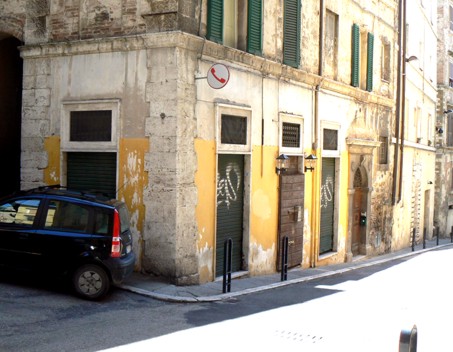
Above & below: Patrick’s bar which Knox managed to drive out of business.
1. Explanation of calunnia
Knox was prosecuted by the Republic of Italy, not by Lumumba, on a calunnia charge and her prison sentence was extended when she was found guilty of that.
The charge of calunnia (art. 368) has been commonly translated as “slander” in the English/US media. This translation is incorrect, however, as calunnia is a crime with no direct equivalent in the respective legal systems.
The equivalent of “criminal slander” is diffamazione, which is an attack on someone”Ÿs reputation. Calunnia is the crime of making false criminal accusations against someone whom the accuser knows to be innocent, or to simulate/fabricate false evidence, independently of the credibility/admissibility of the accusation or evidence.
The charges of calunnia and diffamazione are subject to very different jurisprudence. Diffamazione is public and explicit, and is a more minor offence, usually resulting in a fine and only prosecuted if the victim files a complaint, while calunnia can be secret or known only to the authorities. It may consist only of the simulation of clues, and is automatically prosecuted by the judiciary.
The crimes of calunnia and diffamazione are located in different sections of the criminal code: while diffamazione is in the chapter entitled “crimes against honour” in the section of the Code protecting personal liberties, calunnia is discussed in the chapter entitled “crimes against the administration of justice”, in a section that protects public powers.
2. Knox Defense
Knox took the stand for two days during her trial, of course, trying to explain why she did what she did to her kindly former employer.
She only seemed to dig herself in deeper.
3. Patrick’s Win
Now Terni In Rete confirms his government compensation for his several weeks in Capanne and some damaging badmouthing.
CASSATION: EIGHT THOUSAND EUROS FAIR COMPENSATION FOR PATRICK LUMUMBA
February 4th, 2010
By Adriano Lorenzoni
The fourth criminal session of the Court of Cassation has established that the sum of eight thousand Euros is fair compensation for Patrick Lumumba, the Congolese involved in spite of himself in the murder of the English student, Meredith Kercher.
Lumumba was dragged into involvement by Amanda Knox, and precisely because of her statements spent 14 days in prison. Then the elements gathered by the investigators completely exonerated him. For that unjust imprisonment Lumumba had requested damages of 516 thousand Euros.
In the trial for the murder of Meredith Kercher, Amanda Knox was condemned to 26 years imprisonment, her ex-fiancé, Raffaele Sollecito to 25.Knox, precisely for her false accusations against Lumumba, was condemned to the payment of damages of the sum of 50 thousand Euros with an interim award, immediately applicable, of ten thousand Euros. Neither Lumumba nor his lawyer wished to comment on the decision of the Court of Cassation.
Wednesday, December 09, 2009
Our Letter To Senator Maria Cantwell: Please Don’t Take Precipitate Action Till Full Facts Are In
Posted by Highly-Concerned Washington-State Voters
We are all regular voters who live in the Seattle area. We have signed the original of this letter to our US senator, Maria Cantwell, and sent it off to her Capitol office.
We think we increasingly mirror a very large minority or even a majority of cool-headed but concerned Seattle-area voters who would like to see her speaking up for truth and real justice in this case.
And for the rights of the true victim.
We are not running a campaign. We don’t think Senator Cantwell needs hard persuasion. We think once she immerses herself deeply in the real facts, those facts will tell her the right thing to do.
Dear Senator Cantwell
A number of your well-informed constituents are wondering about your motivations for suddenly injecting yourself into the Meredith Kercher murder trial debate, immediately following last week’s unanimous guilty ruling for American Amanda Knox in Perugia, Italy.
We wonder because you said you were saddened by the verdict and had serious questions about the Italian judicial system and whether anti-Americanism had tainted the trial. But then you went on to describe how you knew for a fact that the prosecution in the case did not present enough evidence for an impartial jury to conclude beyond a reasonable doubt that Amanda Knox was guilty.
We’re confused because it seems to us that if you had been following the case closely enough to be certain that not enough evidence had been presented by the prosecution that you would consequently have a very clear idea of how the Italian judicial system functioned and know whether or not anti-American sentiment had impacted the ruling.
So, as a group of concerned Seattle area constituents who have been following every detail of this case since poor Meredith Kercher was murdered, we humbly offer you our assistance towards bringing things into proper perspective.
Were you aware that Raffaele Sollecito, an Italian from Giovinazzo, Bari was convicted right alongside Ms. Knox? Mr. Sollecito received some of the best legal representation available in Italy, including senior lawyer and parliamentary deputy Giulia Bongiorno who won fame as a criminal lawyer when she successfully defended former Italian Premier Giulio Andreotti a few years ago.
Ms Bongiorno has said nothing about anti-American sentiment having influenced the ruling against her client, nor has she complained about fundamental problems with the way this trial was run. Instead, she is now completely focused on looking ahead to the appeal process as her next opportunity to mitigate sentences or argue for her client’s innocence.
This should assuage some of your concerns.
But perhaps you are referring to the extra year Ms. Knox received in comparison to Mr. Sollecito’s 25-year sentence as a clear example of anti-American sentiment? That’s a fair concern; however, in Italy the jury panel for a trial is required to submit a report within 90 days of a ruling describing in great detail the logic used to convict and sentence, or absolve a defendant.
For example, in Rudy Guede’s fast-track trial for the murder of Meredith Kercher last year Judge Paolo Micheli issued an exhaustive 106 page report outlining the panel’s labored decision-making process, in sometimes excruciating detail. We can expect no less for the trial of Amanda Knox and Raffaele Sollecito, and when that report is issued we will have our best look yet at the evidence that was used to convict the pair.
We suggest that you seriously reconsider “bringing” Hillary Clinton and the State Department into the debate.
Consider that State Department spokesman Ian Kelly stated that the US embassy in Rome had been tasked with monitoring the trial and had visited Ms. Knox in jail, and several embassy representatives were known to have attended the reading of the ruling last week. In addition, an American reporter based in Italy who has followed the case from the outset said last night on CNN that the trial had been monitored from the outset.
Secretary Clinton has clearly been very busy with far more critical tasks than to have maintained a personal familiarity with the Kercher murder case; however, Kelly did state that in response to recent press reports Secretary Clinton had taken time to look things over and has yet to find any indication that Knox did not receive a fair trial. You surely realize that Secretary Clinton will not be interested making public comments regarding an ongoing legal process in a sovereign, democratic nation that is a long-time ally of the United States.
Also note that on the Italian side of the equation, Italian Foreign Minister Franco Frattini told his countrymen that he has yet to receive any criticisms of the trial from the office of the US Secretary of State and that the fierce criticism of the case by the Seattle based Amanda Knox support group should not be confused as the position of the US government.
And Luciano Ghirga, Knox’s own Italian lawyer, has stated that he does not question the validity of the trial and that he believes it was conducted correctly. Furthermore, regarding your desire to have Clinton become involved, Ghirga concluded, “That’s all we need, Hillary Clinton involved”¦this sort of thing does not help us in any way.”
Perhaps he is referring to the heated discussions in the Italian press these days regarding the strong criticisms of Italy’s legal system coming from a country that supports Guantanamo Bay, the death penalty, and other perceived injustices of a far-from-perfect American legal system.
As these examples demonstrate, and from your own humble constituents’ well-informed perspective, there is nothing out of the ordinary or alarming about the Meredith Kercher murder trial process. The prosecutors and defense teams will continue to debate the evidence throughout the appeal process, just as we should expect them to.
If you do decide to go forward with your inquiry, despite significant opposition from your constituents, we recommend that you do so only after becoming more familiar with the evidence presented during the trial, as presented by a neutral source. The family and friends of the US citizen recently convicted are probably not neutral.
If you take a good look, you will see that there are checks and balances in the Italian way of achieving justice, just as there are in the American system. In the final analysis, it is completely as Beatrice Cristiani, deputy judge for the Kercher murder trial, put it: “As far as I am aware our system of justice does not make provision for interference from overseas.”
Fully signed by all of us in the original sent to Senator Maria Cantwell
Tuesday, December 01, 2009
Barbie Nadeau Cracks The Mystery Of Why Sollecito’s Lawyer Was Arguing For Knox
Posted by Peter Quennell
Click above for the report in the Daily Beast.
Yesterday’s strategy by Ms Bongiorno had been puzzling us behind the scenes. Even the Italian media seemed confused. Some thought she was subtly saying that Knox had framed Sollecito. This analysis sounds authentic.
American murder suspect Amanda Knox was nervous Monday morning when she entered the courtroom in Perugia…
Sollecito’s co-counsel Giulia Bongiorno…. surprised court observers and spent most of the morning ignoring her own client. Instead, she defended Knox even though Sollecito is the only of the two with DNA evidence in the room where Kercher was murdered…
By doing the work of Knox’s defense team, Sollecito’s own defense took a calculated risk that it will be harder for the jury to convict them both. But in doing so, she paved the way for the two to be judged as one, meaning they will either both be acquitted or both receive life sentences.And by defending Knox and attacking the forensic evidence against her…. [Bongiorno] is banking that Knox’s lawyers will also do their bit to defend Sollecito later this week when it is their turn.
“She is not Amanda the Ripper,” Bongiorno told the jury, which at times must have been wondering when she would get to Sollecito. “She is a little crazy, extravagant. She does the cartwheels in the police station because reality for her is too strong to deal with. She is spontaneous, immediate, and imprudent.”
It was a moment of obvious relief for Knox. The last few weeks have been particularly arduous for her. Two weeks ago, Rudy Guede, the man who has already been convicted for his part in Kercher’s murder, testified in his appeals trial that he saw her silhouette in the window of the crime scene the night of the murder.
The same week, the prosecutor painted a disturbing picture of Knox as a drug-fueled vixen who called Meredith Kercher “prissy” before threatening her at knifepoint to have group sex with Guede and Sollecito. Then last week as the civil plaintiff’s closing arguments against her concluded, Knox was called a “dirty minded she-devil” by lawyers for Patrick Lumumba….
[Monday] was the best day the defense has had in this trial. Bongiorno’s oratory was a tribute to criminal defense. The jury didn’t take their eyes off her as she weaved a story separated by her own self-titled chapters. And when Knox’s defense lawyers begin their summation, they are expected to do their part and pick up where Sollecito’s defense left off.
“We are really four lawyers with two clients,” Knox attorney Carlo Dalla Vedova said after court. “We are all in the same boat.” Soon the jury will decide whether it will stay afloat.
Monday, November 30, 2009
The Summations: Nick Pisa Sums Up Sollecito Lawyer’s Remarks About Knox DRAFT
Posted by Peter Quennell
The Summations: Sollecito’s Lawyer Says Knox Was Not The Sort To Commit Murder
Posted by Peter Quennell
TGCom’s headline that Sollecitos lawyer claimed Knox was framing Sollecito is not born out by this longer report from Richard Own in The Times.
A lawyer for the defence today told the judge and jury Ms Knox was not “Amanda the Ripper” but more like Amelie, the wide-eyed innocent played by Audrey Tautou in Jean-Pierre Jeunet’s 2001 hit film of the same name.
Giulia Bongiorno, defending Mr Sollecito, said “Throughout this trial I have heard Amanda described as someone who nursed a hatred, someone who was a maneater and someone who was a diabolical witch. But she is not Amanda the Ripper. She is a fragile and weak girl.”
She said Ms Knox, 22, was like “a little girl who looks at people and the world with child-like eyes, full of energy, spontaneous and imprudent ... If anything, she is similar to the character Amelie, the French girl in the film of the same name she was watching with Raffaele the night of the murder.”
Ms Knox and Mr Sollecito claim they spent the night of the murder at his flat, smoking cannabis. However Mr Sollecito has testified that he cannot remember if Ms Knox was with him all the time….
Ms Bongiorno, an incisive front-rank Italian lawyer, said that Mr Sollecito, 25, an information technology student, could not have taken part in the murder and sexual assault of Ms Kercher since it was he who had “raised the alarm and waited for the investigators on the doorstep of the house of the crime. Would a killer do that?’‘...
In an impassioned address Ms Bongiorno said that Mr Sollecito barely knew Ms Kercher, and did not know Guede at all. The prosecution had “failed to establish any link” between Mr Sollecito and Guede. “In this trial there are many doubts, but one certainty, that the two did not know each other at the time of the crime,’’ she said. “The only link between them is the charge sheet.’’ The prosecution reconstruction of the crime was “incomplete, with the essential part missing”.
Ms Bongiorno, who successfully defended Giulio Andreotti, the former Italian Prime Minister, against charges that he was linked to the Mafia, said a bloody footprint at the cottage was not Mr Sollecito’s, as the prosecution had claimed, but came from a shoe belonging to Guede.
She used quotations from Socrates to the late Italian singer-songwriter Sergio Endrigo to support her case that the prosecution had failed to prove Mr Sollecito’s guilt “beyond reasonable doubt”. She said that the prosecution had also failed to establish a motive for the crime….
On Saturday Mr Sollecito told the court that Ms Knox was “not manipulative or violent or diabolical, as she is made out to be. She does not have a dark side, she is a girl like many others”. Luca Maori, another lawyer defending Mr Sollecito, said that Guede’s DNA was “on Meredith’s sweatshirt, it’s on her handbag, it’s on her bra. Only one person carried out this crime and it was Guede.”
He said that the bespectacled Mr Sollecito, who comes from a well to do family at Bari in southern Italy, was “a calm, quiet and reserved young man” who when he met Ms Knox in Perugia as a 23-year-old student had had “little sexual experience”.
The Summations: Sollecito’s Lawyer Ms Bongiorno Makes It To Court To Sum Up
Posted by Tiziano
This report is translated from Corriere. It predates the report warned of just below on the claimed framing of Sollecito.
Back after an ailment linked to an inflamed appendix, Bongiorno has completely recovered….
Sollecito’s lawyer is claiming the possibility of the contamination of the DNA traces…. Also that the prosecutorial reconstruction “has the flavour of an unfinished opera with the essential part missing”.
The lawyer also stressed that the proof of an acquaintance between the young man and Rudy Guede is lacking. Bongiorno said, “It is certain that the two did not know each other at the moment of the crime. The only element linking them is the prosecutor’s charge.”
Referring to what she claims is the incompleteness of the prosecutor’s reconstruction, the lawyer quoted a verse from one of Sergio Endrico’s songs: “it was a such a pretty little house but it had no roof and no kitchen”.Bongiorno said, “Sollecito was close to graduating and was nurturing his own dreams when he stumbled over a footprint which tore them away from him.” Then she spoke about the bloody footprint from a shoe, found next to Kercher’s body and initially attributed to Sollecito, but then revealed as belonging to Guede. “Raffaele - his defence lawyer underlined - was fitted into the scene of the crime by that footprint and he went to prison because of that footprint.”
Bongiorno then went on to speak of the morning when [Meredith’s] body was found, November 2nd, 2007. “Sollecito gave the alarm and waited for the investigators on the step in front of the crime house. Does it seem credible to you that a murderer would do this?” she said.


